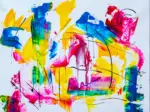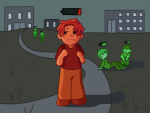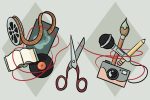If there is one thing that quarantine has revealed about my free time, it’s that I don’t have a strong urge to do anything when my days are left unstructured. While the first few weeks of March provided a much-needed break from the relentless pace of modern life, the lack of structured obligations quickly became dull and left me wanting to find something to occupy my time during these months — a personal project, so to speak. The first thing I tried was a hobby in which I have some background: art.
I’ve been taking art classes since I was in elementary school. However, what makes drawing different than other school activities is that I continued it of my own accord.
Ironically, throughout quarantine, what is supposed to be an outlet for creativity quickly devolved into something that feels more like an obligation. It’s paradoxical, considering that hobbies should be pursuits that are naturally relaxing, but many of my art friends shared similar thoughts. In fact, many of us didn’t plan to pursue drawing seriously in college, if at all.
With some digging, I’ve come across a few misconceptions that I held about art and hobbies in general. Below are a few pieces of advice that can make artmaking less of an obligation.
Hobbies are not effortless
It’s a mindset that I’ve held for a long time: Hobbies should require no effort. The idea that minimal effort in personal pursuits could still lead to positive results is one that I’ve blindly accepted to be true. However, there is something wrong with this belief.
Most of my art experience took place inside the classroom, and while I did enjoy drawing in class, that doesn’t necessarily mean that it will be the same at home. At least for me, the classroom is a more effective source of motivation than the unstructured time in my room.
David Conroy, a professor of kinesiology and human development at Penn State, explains that “It’s hard for everybody to fit new things into their lives, because it’s a zero-sum game, where in order to create time for a new activity, you have to take that time away from doing something else.” As such, revisiting a hobby can seem easier said than done. Without acknowledging that it requires discipline to find time in a busy schedule for a personal pursuit, it can be easy to quit making art just as fast as you started. The most difficult hurdle can sometimes be committing to something.
Strike a balance between artmaking that’s easy and stimulating.
In an interview with Katie Heaney, Conroy continues by saying that there are two principles to making a hobby, like artmaking, feel like a source of satisfaction rather than an obligation. Specifically, is the activity easy and enjoyable? Creating art should be something done with relative ease, but it shouldn’t be a mindless activity. Rather, it should be engaging.
For artmaking, two methods can be used to stimulate your mind. First, try techniques that don’t include drawing a reference photo as realistically as possible. Most of my training in art classes was done through copying existing artworks or photographs, but it’s caused me to develop a habit of trying to draw realistically with no room for error. Some styles I’ve worked with, like gesture drawing and abstraction, have been extremely rewarding because they forced me to think critically about my art. When making art, strict accuracy quickly becomes boring.
Second, experiment with mediums beyond sketchbooks and graphite pencils. Whether through wet mediums like watercolor or dry ones like charcoal, newer materials can give that necessary boost that makes art more exciting.
Both methods require discipline. With new methods come opportunities for error, which is something I have always struggled with in art. Art amplifies perfectionism because you can see your errors — but don’t let fear of making a mistake hold you back.
If all else fails, take a break.
Art is a very solitary activity, and having myself as my only critic has led me to become quite stagnant. Sometimes, the best course of action is to take a break.
I’m currently taking a summer class, and one piece of advice that really struck me came from Maximilian Auffhammer, a professor of sustainable development at Berkeley. His advice was to ignore sunk costs. Sunk costs generally refer to investments — usually in the form of time and money — that can no longer be recovered. It originated as an economics term, but the idea of sticking with an unsatisfying endeavor because of the amount of time you’ve put into it can go beyond the realm of economics; it applies to things like relationships, personal belongings and even hobbies.
As someone who spent so much time taking art classes, it feels disheartening to know that this investment didn’t culminate in whatever I envisioned in my mind. However, do we really start a hobby to become the best at it? It’s time to take a step back and look elsewhere. I’m not arguing that artmaking is forever out of my life or that you should ditch whatever hobby you’ve loved in the past. Rather, instead of constantly looking for something to click with my art, I know that my efforts are better spent elsewhere.
I’ve realized I’m not the best at expressing myself visually. Fortunately, art extends far beyond what can be hung on a wall in an art museum and includes everyday personal expression like fashion, performance and writing. The art skills that we’ve learned are applicable everywhere, and when inspiration hits, it’s always possible to return back to art.
















